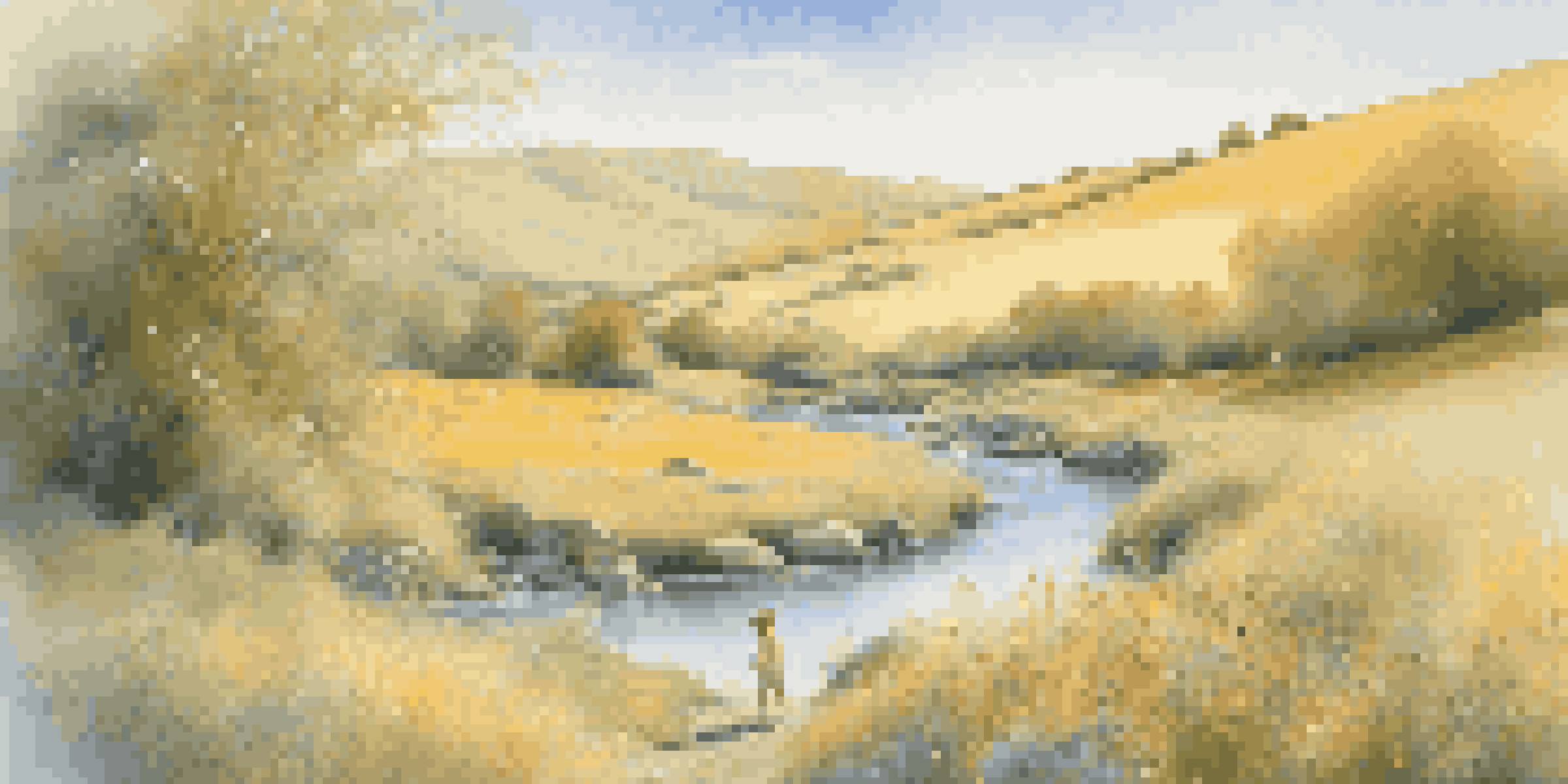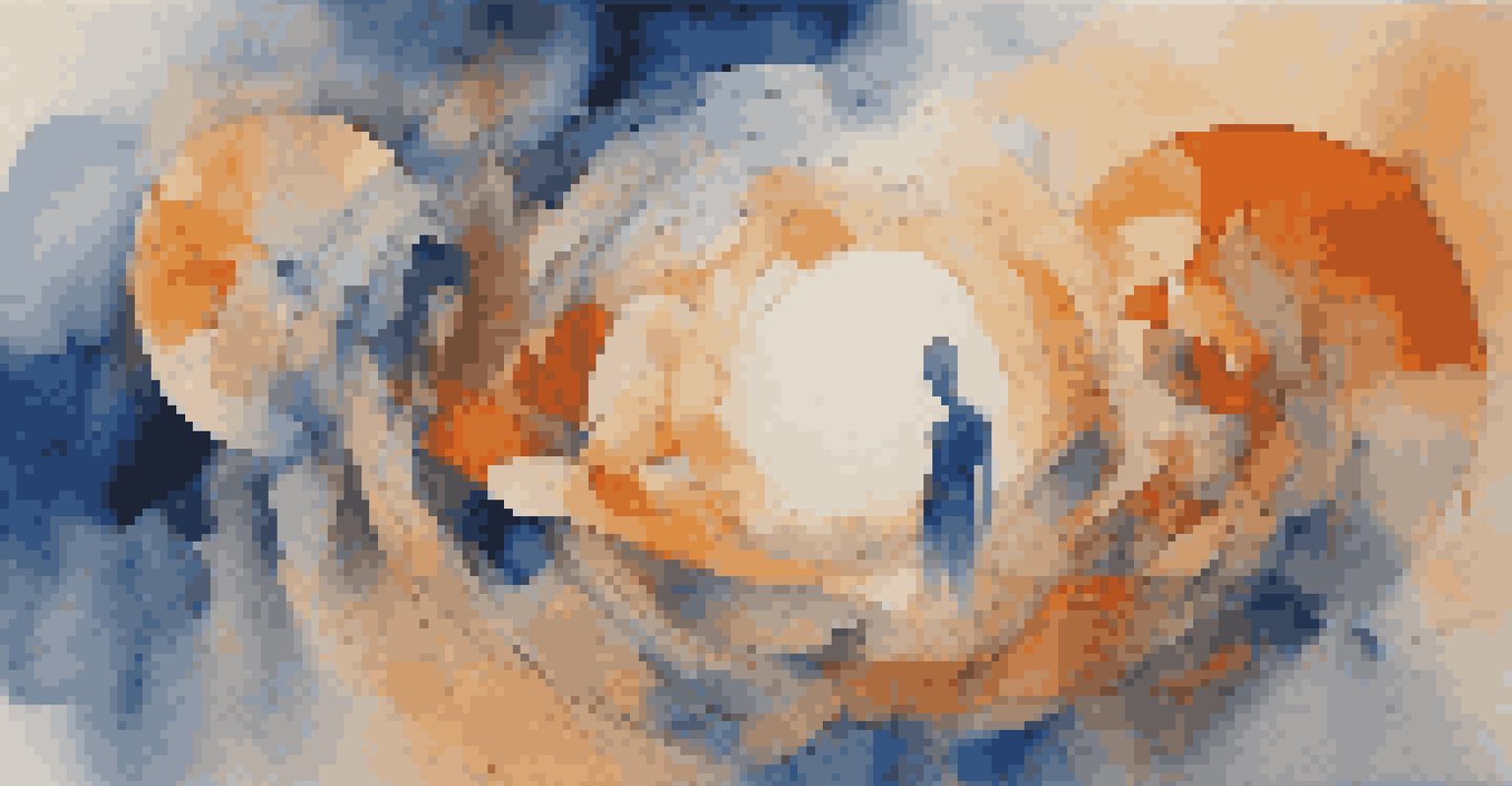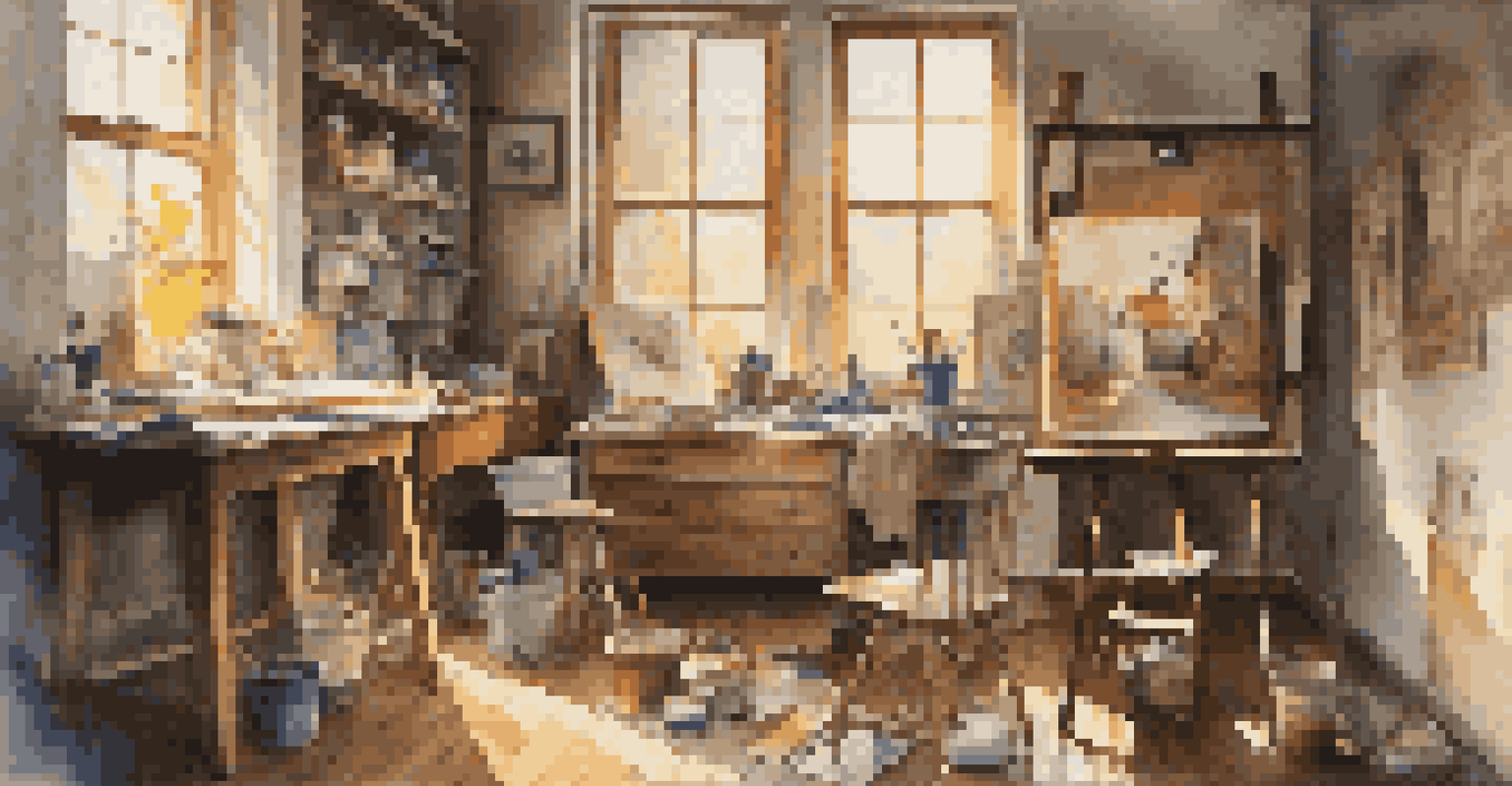Artistic Exploration of Memory: The Role of the Artist's Eye

Understanding Memory Through Artistic Expression
Memory is a complex tapestry woven from our experiences, emotions, and perceptions. Artists have a unique ability to capture and reinterpret these memories, translating them into visual or auditory forms. By examining their work, we can gain insight into how they perceive and remember the world around them.
Art is the most beautiful of all lies.
For instance, consider how a painter might recreate a childhood landscape. Each brushstroke can evoke not just the scenery but also the feelings associated with that place, helping viewers tap into their own memories. This shared experience creates a bond between the artist and the observer, making memory a communal experience.
Ultimately, artistic expression serves as a mirror reflecting both individual and collective memories, enriching our understanding of the human experience. Through their lens, artists invite us to explore our pasts and connect with the emotions that shape us.
The Artist's Eye: A Unique Perspective on Memory
The artist's eye is often described as a lens that filters reality through personal experience and emotion. This perspective allows artists to highlight aspects of memories that may be overlooked by others. They can transform mundane moments into profound reflections, making the familiar feel new and significant.

Take photography, for example. A photographer might capture a fleeting moment, like a child playing in the rain, and in that snapshot, they encapsulate joy, innocence, and nostalgia. This ability to freeze time allows viewers to engage with the memory, prompting them to recall their own similar experiences.
Art Captures Collective Memories
Artists translate personal and communal memories into various forms, allowing viewers to connect with their own experiences.
By showcasing their interpretations, artists encourage us to reconsider our own memories and the way we perceive the world. This unique perspective not only broadens our understanding but also invites introspection and personal reflection.
Different Mediums, Different Memories: Art Forms Explored
Different artistic mediums offer various ways to explore and express memory. From painting and photography to music and dance, each form has its own strengths in conveying the nuances of our recollections. For instance, while a painting can capture a still moment, music might evoke memories through rhythm and melody, stirring emotions that visuals alone cannot.
Memory is the treasure house of the mind wherein the monuments thereof are kept and preserved.
Consider how a sculpture can represent memory through texture and form, inviting touch and interaction. Each medium provides a unique portal into the artist's memory, allowing audiences to engage with it in diverse ways. As we shift between these forms, we experience memory from multiple angles, enriching our understanding.
Ultimately, exploring memory through various artistic expressions highlights the interconnectedness of our experiences. It reminds us that while we may have different memories, the emotions tied to those memories often resonate universally.
Cultural Influences on Artistic Memory Interpretation
Culture plays a significant role in shaping how artists interpret and express memory. Different societies have unique narratives, symbols, and histories that influence the way memories are perceived and represented. For example, an artist from a collectivist culture may focus on shared experiences, while one from an individualistic culture might emphasize personal recollections.
This cultural lens can be seen in various art forms, such as folk art, which often reflects the collective memory of a community. These artworks not only preserve cultural heritage but also serve as a medium for storytelling, connecting generations through shared narratives.
Cultural Perspectives Shape Art
Cultural backgrounds influence how artists interpret and express memories, enriching our understanding of shared human experiences.
By exploring diverse cultural interpretations of memory, we gain a richer understanding of the human experience. This exploration invites us to appreciate the power of art in bridging gaps between different backgrounds and fostering empathy.
Memory's Fragility: The Role of Nostalgia in Art
Nostalgia, often described as a longing for the past, plays a crucial role in how artists engage with memory. It can be a powerful motivator for creation, prompting artists to reflect on their personal histories. This emotion can transform into inspiration, leading to works that resonate deeply with viewers who share similar feelings of nostalgia.
For instance, a filmmaker might create a film that captures the essence of their childhood, using familiar settings and music to evoke a sense of longing. The result is a potent blend of memory and emotion that can transport audiences back to their own pasts, creating a shared experience of nostalgia.
By embracing nostalgia, artists not only honor their memories but also provide a space for audiences to explore their own. This emotional interplay enriches the artistic experience, reminding us of the beauty and complexity of memory.
The Intersection of Memory and Identity in Art
Memory and identity are intricately linked, often shaping how artists perceive themselves and their work. An artist's memories can inform their sense of self, influencing their creative expression and the themes they explore. This relationship highlights how personal experiences become the foundation for artistic exploration.
For example, an artist reflecting on their cultural heritage may create pieces that celebrate their background, using memory as a source of pride and identity. This exploration not only enriches their work but also fosters a connection with audiences who may share similar experiences.
Technology Transforms Memory Art
Advancements in technology are reshaping artistic practices, offering immersive experiences that deepen our engagement with memory.
By examining the intersection of memory and identity, we see how art becomes a powerful tool for self-discovery. It allows artists to navigate their pasts while inviting viewers to reflect on their own identities and the memories that shape them.
The Future of Memory in Artistic Practices
As technology continues to evolve, so does the way artists explore and express memory. Digital art forms, virtual reality, and interactive installations are reshaping our understanding of memory in artistic practices. These innovations offer new avenues for artists to engage audiences and create immersive experiences that challenge traditional notions.
For instance, virtual reality can transport viewers to a memory, allowing them to experience it from a first-person perspective. This technology not only enhances the emotional impact but also encourages deeper engagement with the artwork, fostering a more profound connection between artist and audience.

Looking ahead, the future of artistic exploration of memory is bound to expand, driven by creativity and technological advancements. As artists continue to push boundaries, we can expect to see even more innovative ways to capture, share, and reflect on the memories that define us.